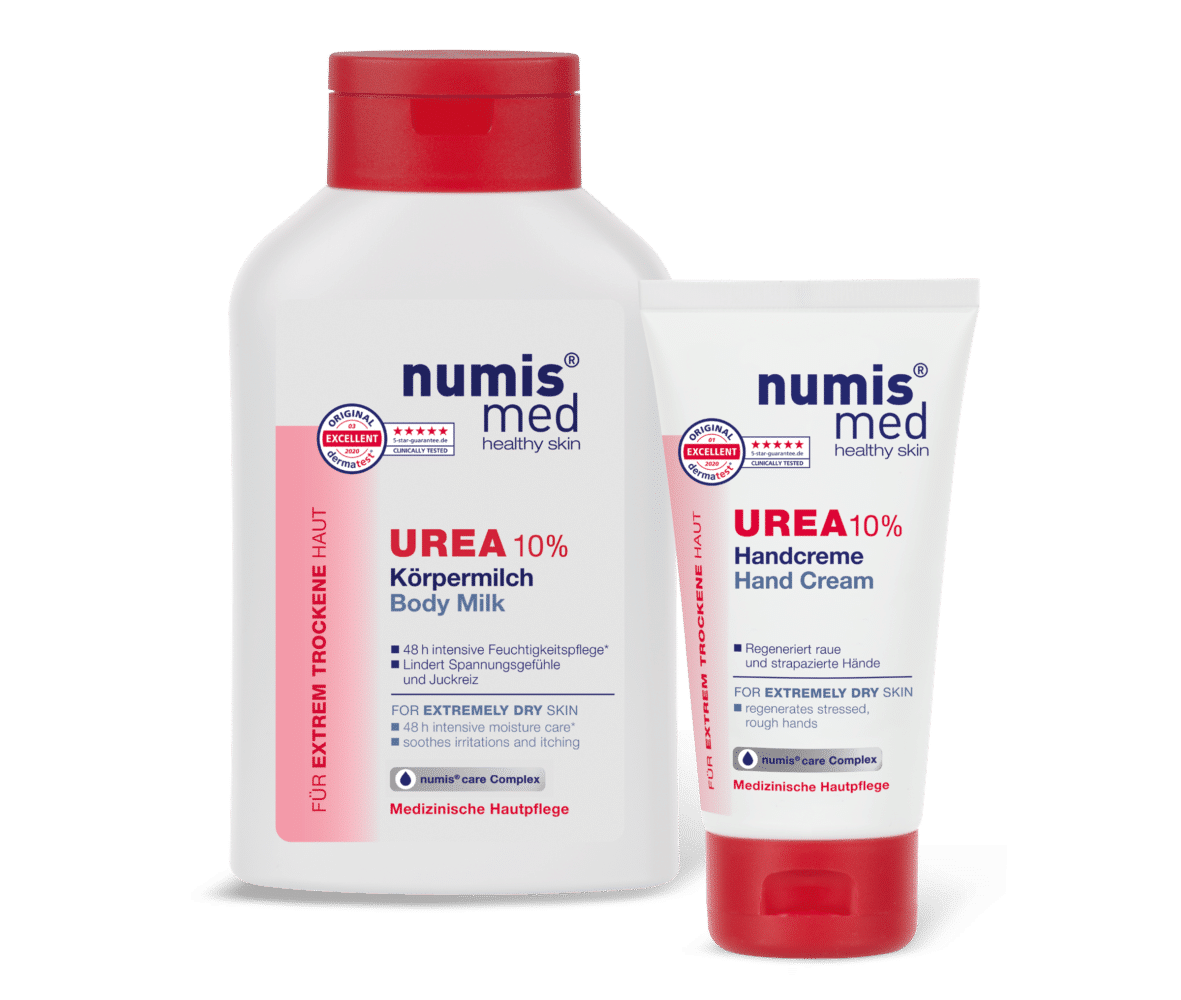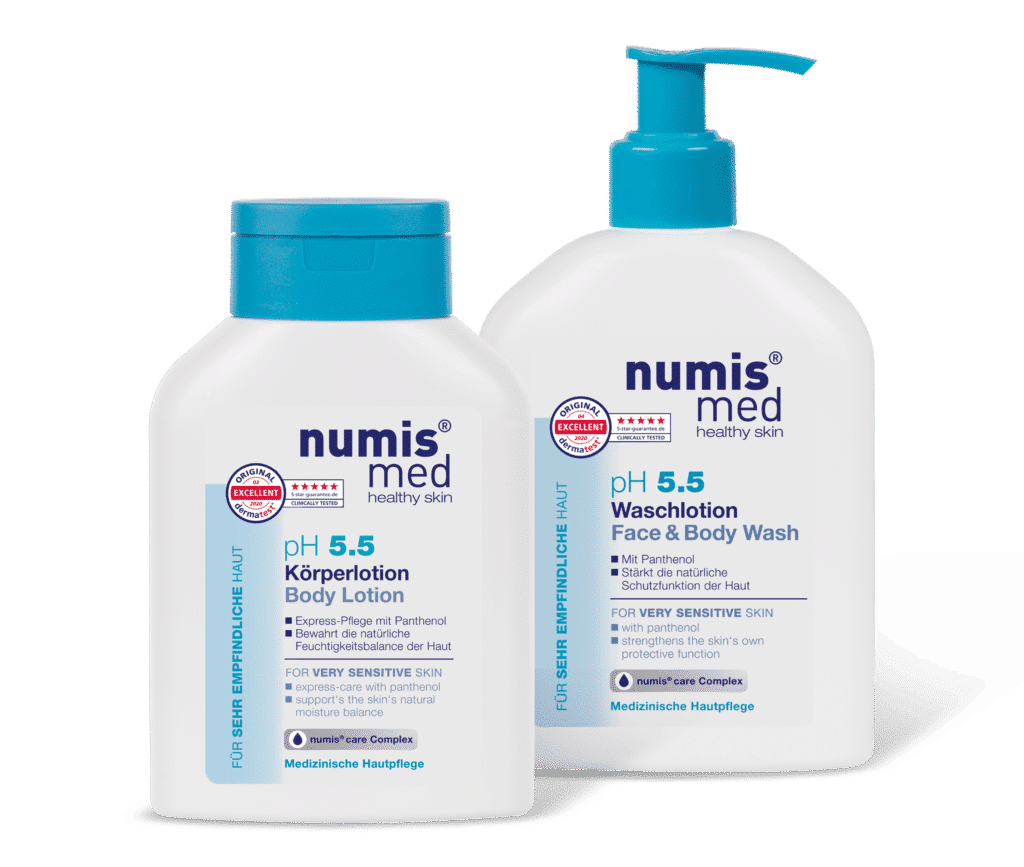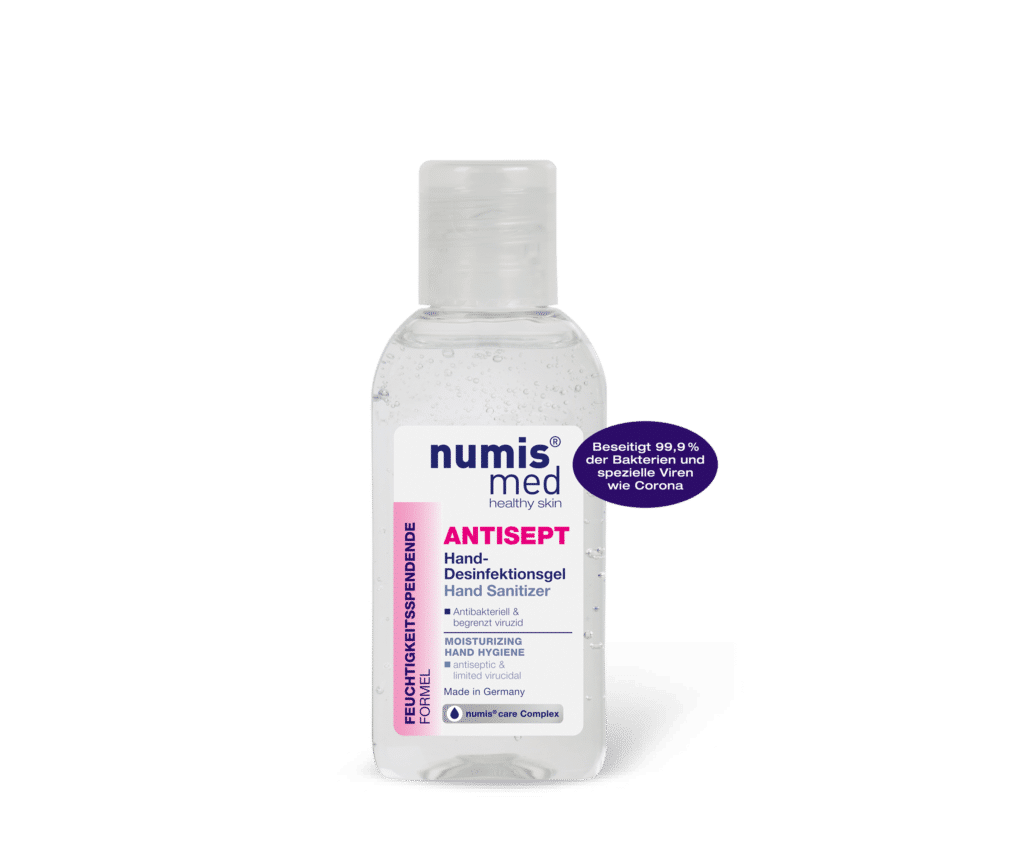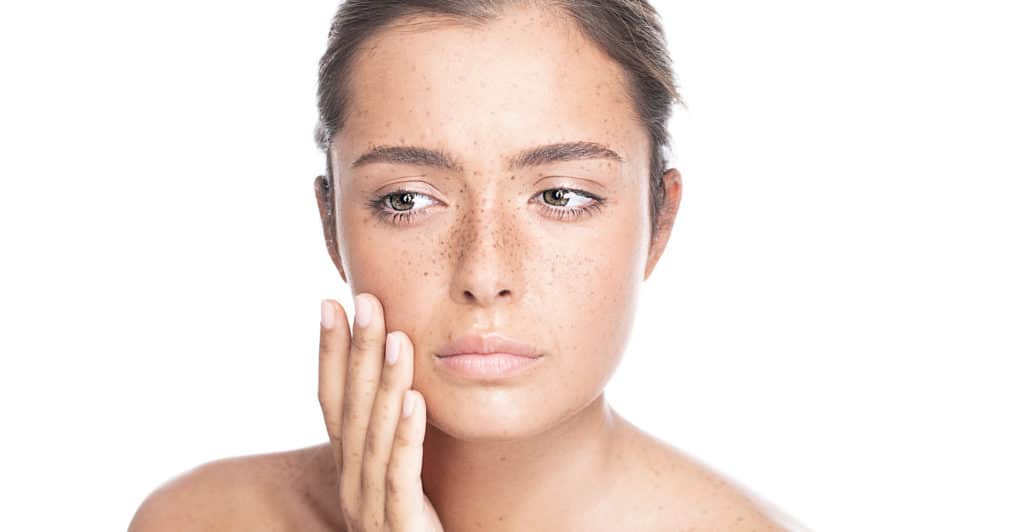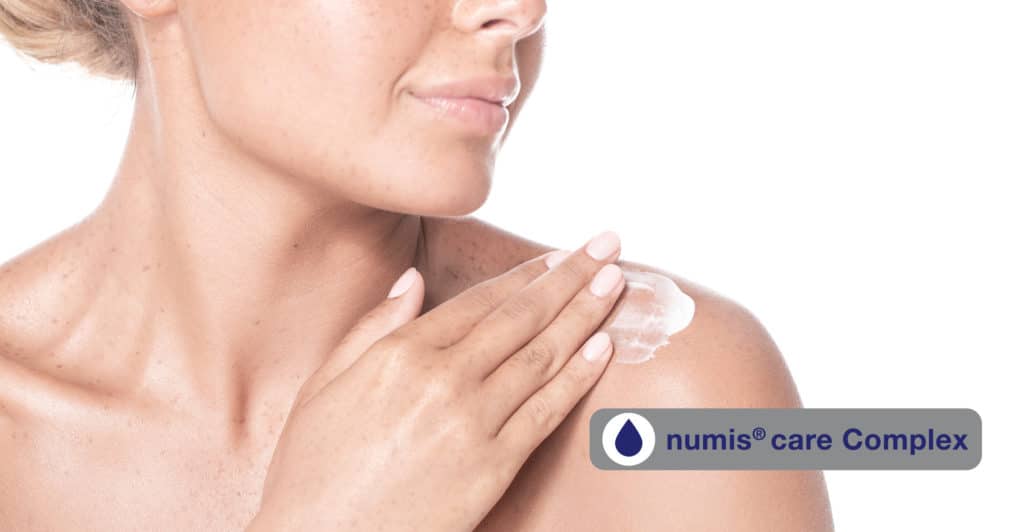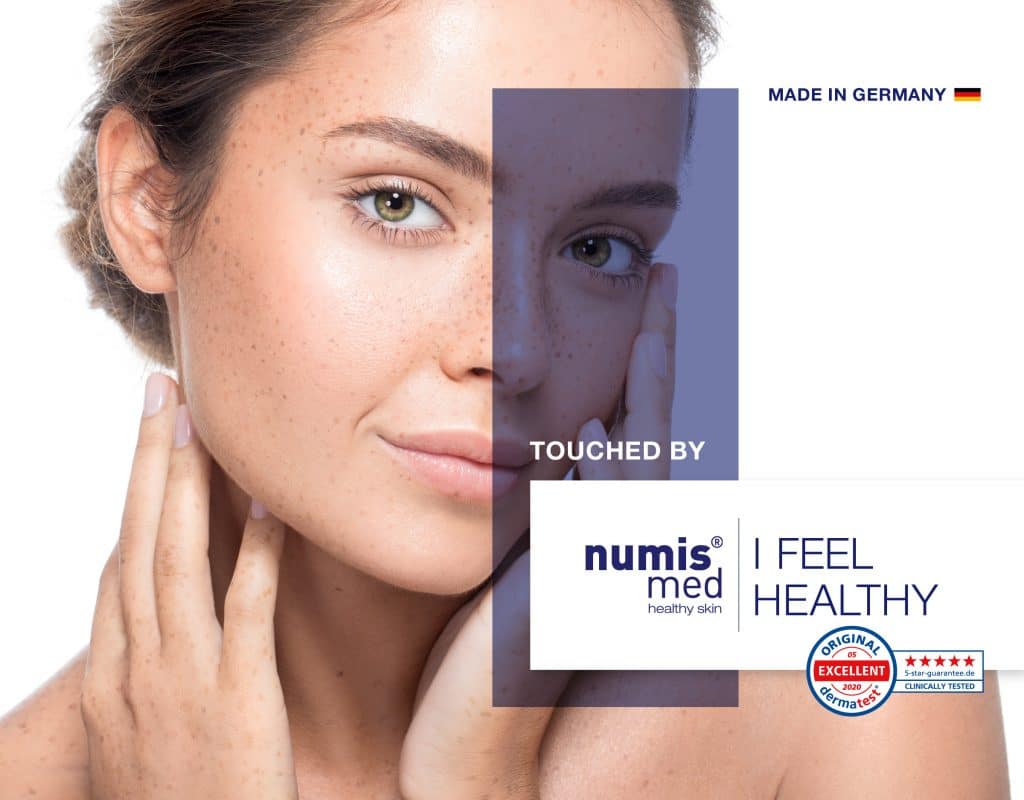
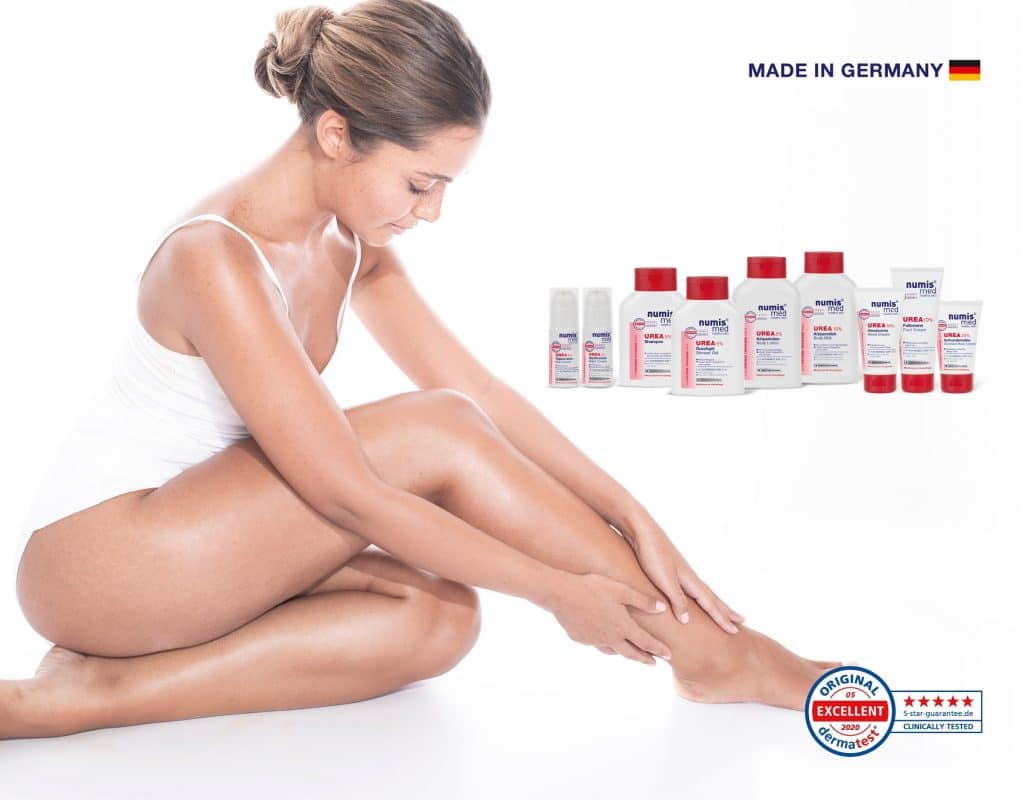
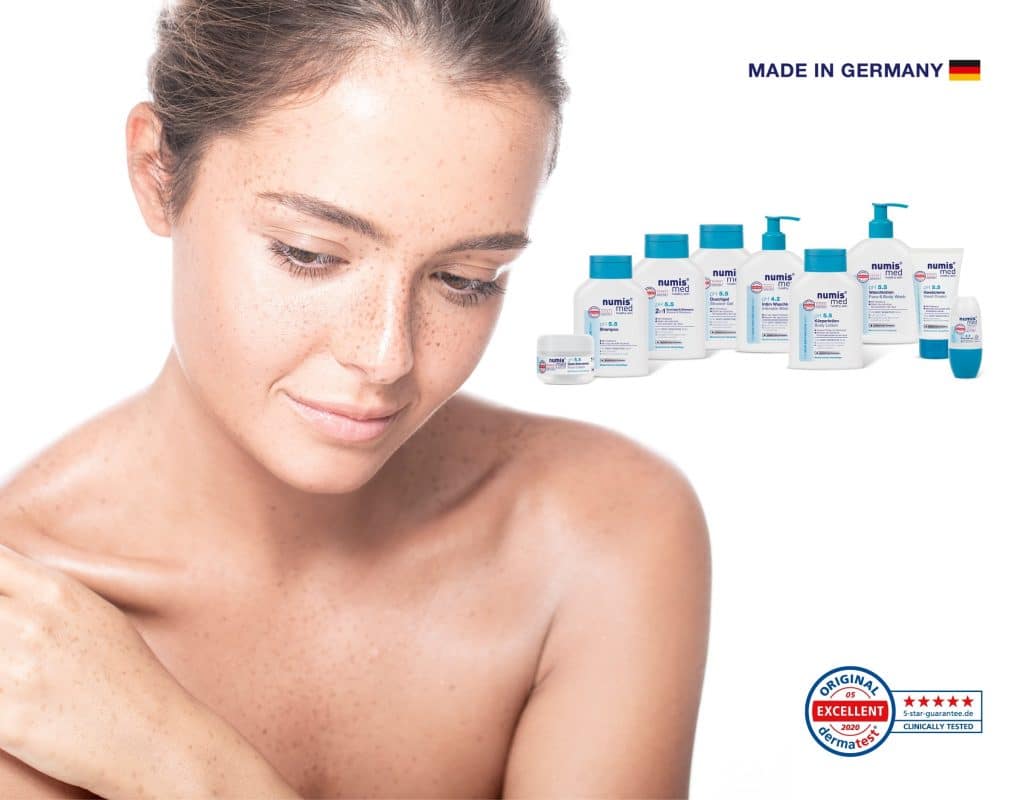
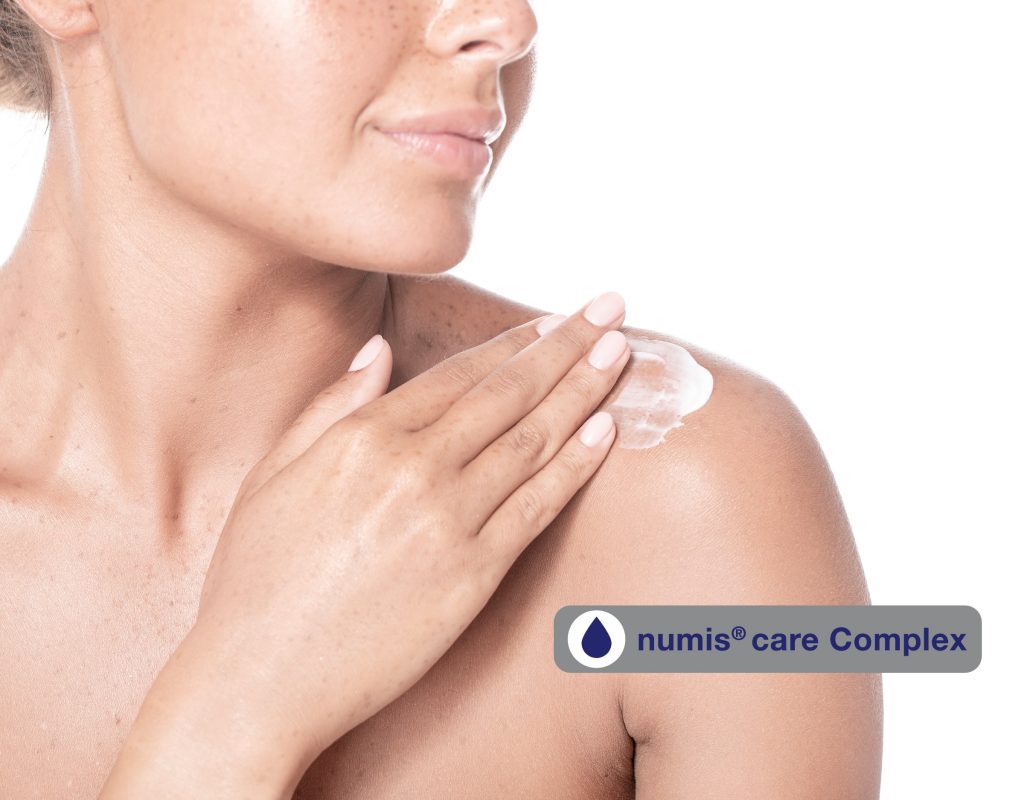
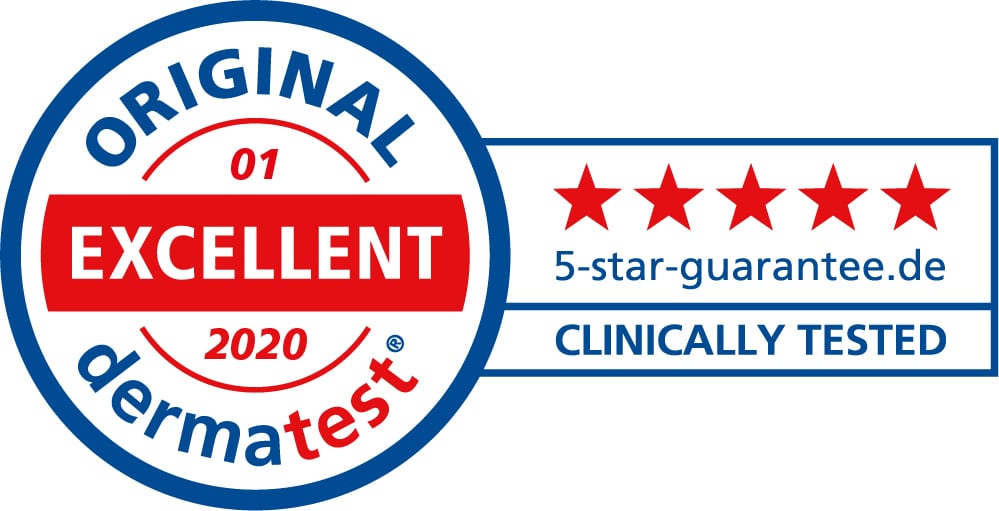

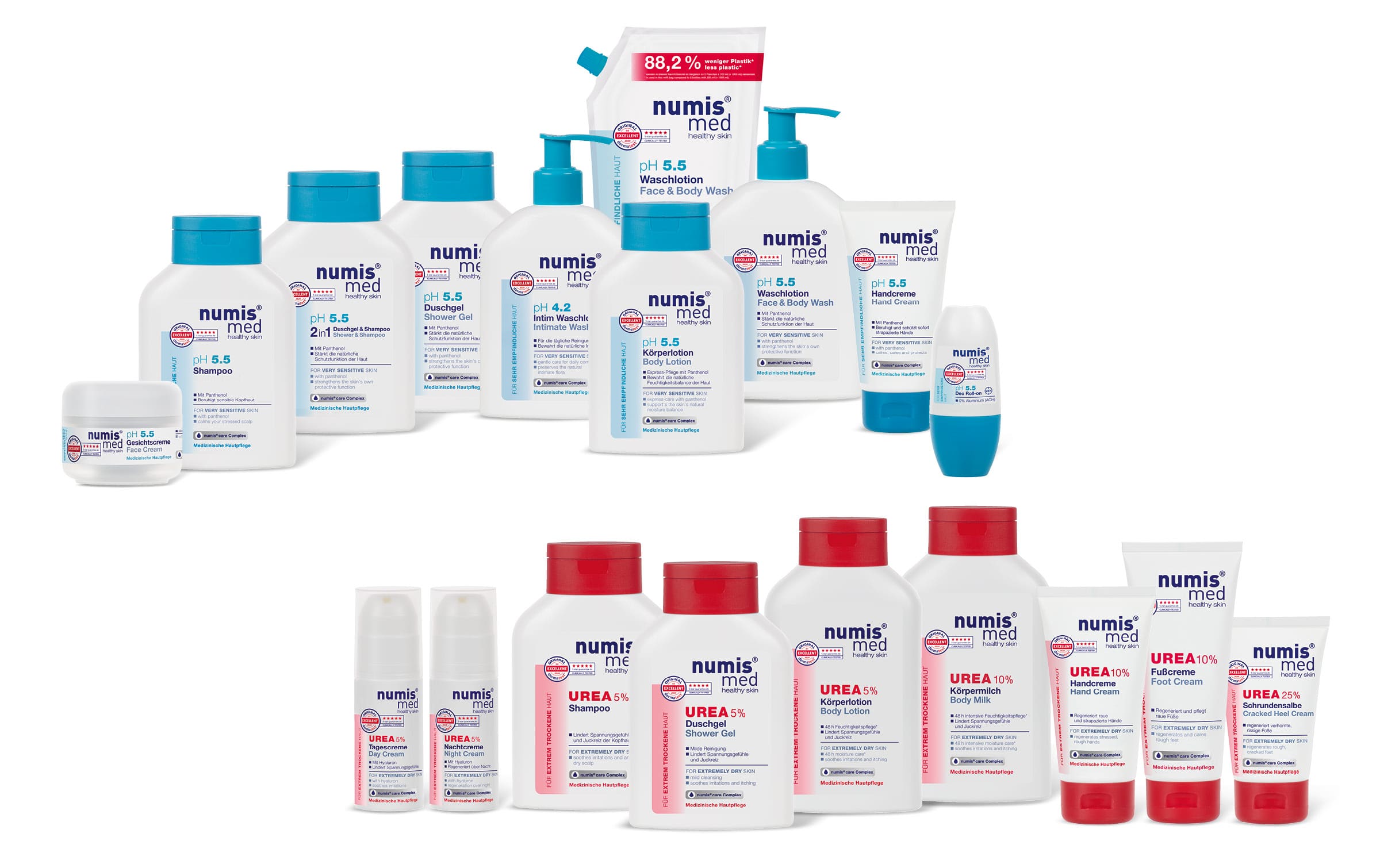


All products contain the numis® care Complex, for more moisture and skin soothing, as well as special range-specific ingredients such as Urea or Panthenol.

All our products have been awarded the DERMATEST® 5-star seal for excellent skin tolerance and were manufactured in a German family business.

Experience in medical skin care since 1982. We understand the individual needs of your skin.

What is good for the skin should not harm the environment. That is why all numis® med products are climate-neutral.
